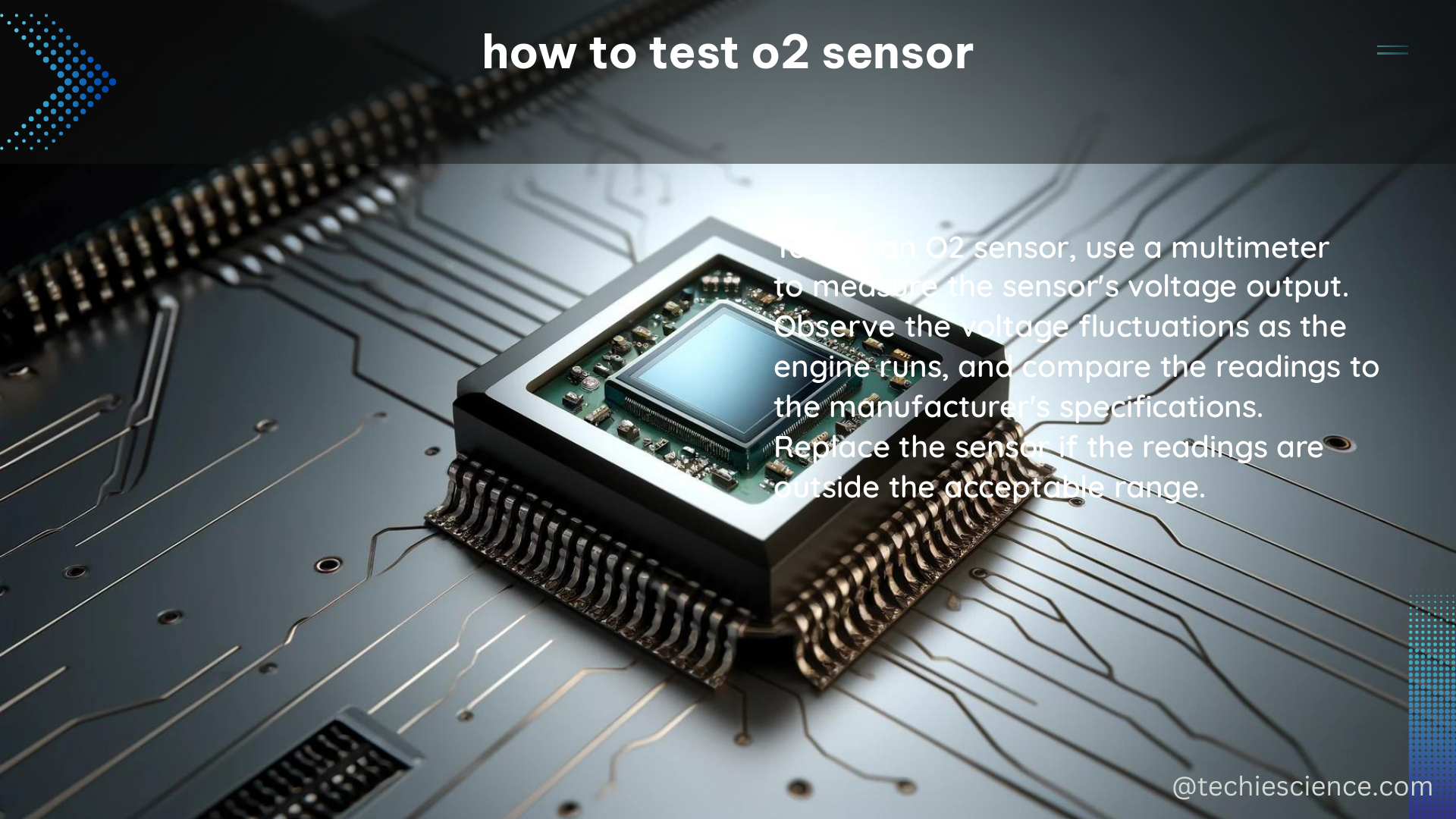Oxygen (O2) sensors are critical components in modern vehicles, responsible for monitoring the air-fuel ratio and providing feedback to the engine control unit (ECU) to optimize engine performance and emissions. Properly testing an O2 sensor is essential for diagnosing and troubleshooting engine-related issues. In this comprehensive guide, we’ll explore the technical specifications, testing methods, and step-by-step procedures to ensure your O2 sensor is functioning correctly.
Understanding O2 Sensor Basics
O2 sensors are voltage generators that produce a small voltage based on the oxygen content of the exhaust. They typically cycle between 0.10 to 0.90 volts, with the sensor reaching the 0.8x Volts amplitude mark while at full operation and the 0.1x Volts amplitude mark while at lean operation. The sensor should cycle at least once per second, showing 3 cross counts on the scan tool PID.
There are two common types of O2 sensors:
- Zirconia Sensors (Narrowband): These sensors have two electrodes and output 200mV (0.2V) in a lean condition and 800mV (0.8V) in a rich condition.
- Wideband Zirconia Sensors: These sensors have four electronic connections, with one pair of connections being their output signal. They provide a more precise measurement of the air-fuel ratio.
O2 sensors are typically located in one of two spots along the engine exhaust:
- Pre-Catalytic Converter (Pre-Cat): Between the exhaust manifold and the catalytic converter.
- Post-Catalytic Converter (Post-Cat): Between the catalytic converter and the exhaust outlet (tailpipe).
Common O2 Sensor Tests

The most common tests for O2 sensors are:
- Heater Test:
- Observe the voltage reading on the multimeter, which should be between 12V and 14V.
-
This test checks the functionality of the sensor’s internal heater, which is essential for maintaining the sensor’s optimal operating temperature.
-
Voltage Test:
- Check the voltage output of the sensor, which should be between 0.10 to 0.90 volts for zirconia sensors.
- For wideband sensors, the voltage output should fall within a specific range, typically between 0-5V.
-
This test verifies the sensor’s ability to generate a voltage signal based on the oxygen content in the exhaust.
-
Resistance Test:
- Check the resistance of the sensor, which should be within a specific range.
- For zirconia sensors, the resistance should typically be between 5-20 ohms.
- This test ensures the sensor’s internal components are functioning correctly.
Testing O2 Sensors with a Multimeter
To test an O2 sensor using a multimeter, follow these steps:
- Ensure the engine exhaust system is cold.
- Switch the multimeter to ‘DC voltage’ mode.
- Connect the multimeter leads to the sensor’s terminals.
- Observe the voltage reading, which should cycle between 0.10 to 0.90 volts for zirconia sensors or fall within the specific range for wideband sensors.
Testing O2 Sensors with a Clamp-Meter
To test an O2 sensor using a clamp-meter, follow these steps:
- Ensure the engine exhaust system is cold.
- Switch the clamp-meter to ‘DC current/DC amperage’ mode.
- Clamp the meter around either of the oxygen sensor heater power wires.
- Turn the engine on and observe the reading, which should be between 0.25A and 1.5A.
Testing O2 Sensors with an Oscilloscope
To test an O2 sensor using an oscilloscope, follow these steps:
- Ensure your oscilloscope inputs are properly isolated from garage or shop mains power.
- Make sure the engine is cold.
- Connect the oscilloscope probes to the oxygen sensor cell lines.
- Start the engine and observe the oxygen sensor outputs while the engine is running and over time.
Advanced O2 Sensor Testing Techniques
For more comprehensive O2 sensor testing, you can consider the following advanced techniques:
- Sensor Response Time Test: Measure the time it takes for the sensor to respond to changes in the air-fuel ratio, which should be less than 300 milliseconds.
- Sensor Switching Frequency Test: Verify the sensor’s ability to switch between rich and lean conditions, which should be at least once per second.
- Sensor Voltage Amplitude Test: Ensure the sensor’s voltage output reaches the expected 0.8x and 0.1x Volts amplitude marks.
- Sensor Heater Resistance Test: Check the heater resistance, which should be within the manufacturer’s specified range, typically between 5-20 ohms.
By understanding the technical specifications, testing methods, and advanced techniques, you can effectively diagnose and troubleshoot O2 sensor-related issues in your vehicle.
Reference:
- How to Test an Oxygen Sensor
- O2 Sensor Diagnostics
- How to Test an Oxygen Sensor
- Testing Oxygen Sensors
- How to Test an Oxygen Sensor

The lambdageeks.com Core SME Team is a group of experienced subject matter experts from diverse scientific and technical fields including Physics, Chemistry, Technology,Electronics & Electrical Engineering, Automotive, Mechanical Engineering. Our team collaborates to create high-quality, well-researched articles on a wide range of science and technology topics for the lambdageeks.com website.
All Our Senior SME are having more than 7 Years of experience in the respective fields . They are either Working Industry Professionals or assocaited With different Universities. Refer Our Authors Page to get to know About our Core SMEs.